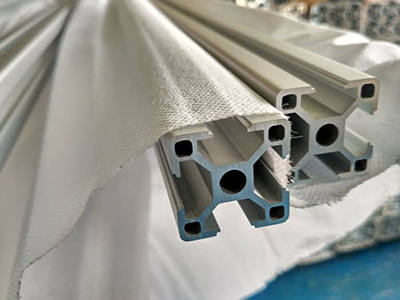
Aluminum framing systems are the most popular and widely used metal framing system today. Most homes use an aluminum frame to support doors, windows and walls. The advent of Light Gauge Steel (LGS) has changed the structural design of buildings but aluminum still remains a very strong player in part of the new builds. Aluminum is lighter, easier to work with and less expensive compared to steel or other types of metal used in framing systems.
Aluminum framing systems are normally made up of 2 x 4 studs /joists spaced at 24 inches on center supported by an aluminum beam, OSB board or plywood joist sheeting which itself is supported by the load bearing wall studs. This structure is in turn, covered with drywall or siding.
Applications of Aluminum Framing Systems: There are many building applications for aluminum framing systems including but not limited to: exterior walls, interior walls, floor system and roof construction. Aluminum can be used as a replacement for steel or wood where load bearing is required.
Benefits of Aluminum Framing Systems:
– Aluminum framing systems are lightweight, easy to work with and can be finished in many styles to suit the application.
– A strong light material makes aluminum suitable for performing high speed production in factories making it adaptable in today’s market.
– Aluminum can be protected with anodizing for a longer lasting finish that resists scratching, chipping and corroding.
– The arc of the metal is very useful in some applications where a bend in a beam or column gives extra strength in bearing weight thereby allowing smaller cross sections to be used.
– Aluminum is a recyclable material that sand cast, roll formed and extruded items can be melted down to form new products.
Disadvantages of Aluminum Framing Systems:
– As with all metal materials, the joints in an aluminum framing system need to be strong enough to take care of any stress from bending or lifting due to a lack of rigidity.
– The coldness of aluminum in wintertime needs to be considered when designing an exterior wall where it is used as siding or for the insulation between studs. There are some aluminum systems that have a thermal break built in to solve this issue.
– Aluminum framing systems are very stiff and care should be taken when cutting, bending and welding the metal.
– Aluminum generally has a high modulus of elasticity which means that it will stretch or distort when exposed to different temperatures unless specifically designed with a low enough modulus for that application. This is where steel framing systems have an advantage in some cases.
– Aluminum can corrode over time when in contact with certain building materials like acetic acid (vinegar) or sulfuric acid. Aluminum also has corroding tendencies when in contact with water vapor or oxygen which can be prevented by adding neon gas to the atmosphere during the welding process.
If you’re looking for an aluminum framing system, contact Minitec Solutions for design assistance to customize the right framing system for your needs.
